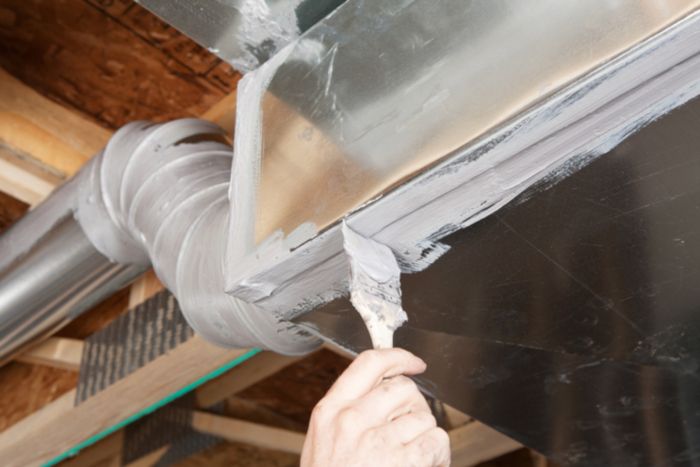Duct sealing refers to patching up any air leaks or tears in the ductwork of an HVAC system. It is often done along with or after air duct cleaning to improve the efficiency and performance of the HVAC system. Here are some key points about duct sealing:

• Air leaks reduce efficiency:
Leaky ducts allow conditioned air to escape before it reaches its destination. Up to 20-30% of air can leak from ducts, wasting money and reducing comfort. Sealing ducts helps retain more air in the system.
• Higher energy bills:
Escaping air means the HVAC system has to work harder and run longer to heat/cool the home, resulting in higher energy usage and utility bills. Duct sealing helps recapture this wasted energy and lower bills.
• Drafts and noise:
Gaps in ductwork can also allow unconditioned air to enter and cause drafts in the home. They may also produce rattling or whistling noises. Duct sealing eliminates these drafts and noises.
• Moisture damage prevention:
Openings in ducts can let in water or allow moisture to condense, leading to mold growth or water damage over time. It helps prevent moisture intrusion.
• Pollution control:
Particles, pollen, pet dander, mold, and other contaminants can enter through gaps in the ducts and circulate in the HVAC system. It helps ensure a tighter seal so only air that has passed through filters circulates.
• Methods used:
Common materials for duct sealing include mesh fabric tapes, mastic sealantshttps://www.greenbuildingadvisor.com/ (like duct seal or duct wrap), metal duct seal tape, and liquid or aerosol duct sealers. The material used depends on the duct surface and size of openings.
• Whole-house air sealing:
For maximum efficiency, it should be combined with other air sealing such as caulking cracks around windows/doors, weatherstripping, etc. This helps achieve an airtight and well-insulated building envelope.
• Duct testing:
Some duct sealing jobs involve testing ducts with smoke sticks or a blower door before and after sealing to find and quantify air leaks. Pressurization testing helps pin down major leak locations for targeted sealing. However, testing adds to the cost and may not always be required.
Sealing your ducts can provide significant benefits. Be sure to hire an HVAC contractor with experience in duct testing, sealing and repair for the best results.

